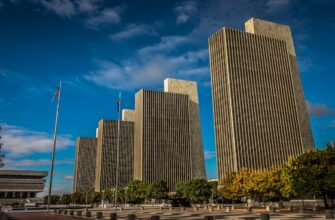- Understanding the USD to Rupiah Exchange Rate
- Key Factors Influencing USD/IDR Fluctuations
- How to Get the Best USD to Rupiah Exchange Rate
- Historical Trends and Current Outlook
- Practical Implications for Different Users
- Frequently Asked Questions
- What’s the average USD to Rupiah exchange rate?
- Where can I find the most accurate live exchange rate?
- Is it better to exchange USD in the US or Indonesia?
- How often does the USD/IDR rate change?
- Will the Rupiah strengthen against the Dollar soon?
- Are there limits on exchanging USD to Rupiah?
Understanding the USD to Rupiah Exchange Rate
The USD to Rupiah (USD/IDR) exchange rate represents how many Indonesian Rupiah you get for one US Dollar. This constantly fluctuating figure impacts travelers, investors, and businesses engaged in US-Indonesia transactions. As Indonesia’s economy grows and global markets shift, monitoring this rate becomes crucial for financial planning and cost optimization.
Key Factors Influencing USD/IDR Fluctuations
Several economic forces drive changes in the exchange rate:
- Interest Rates: Higher US Federal Reserve rates often strengthen the USD, increasing the USD/IDR rate.
- Inflation Differentials: If Indonesia’s inflation outpaces the US, the Rupiah typically weakens.
- Commodity Prices: As a major exporter of coal, palm oil, and nickel, Indonesia’s currency strengthens when commodity prices rise.
- Political Stability: Elections, policy changes, or social unrest in Indonesia can trigger Rupiah volatility.
- Global Risk Sentiment: During economic uncertainty, investors flock to the USD as a “safe haven,” pushing USD/IDR higher.
How to Get the Best USD to Rupiah Exchange Rate
Maximize your money with these proven strategies:
- Avoid Airport Kiosks: Exchange counters at airports offer rates 10-15% worse than city banks.
- Compare Online Platforms: Use aggregators like Wise, XE, or Revolut for real-time rate comparisons.
- Time Your Transfers: Exchange during Indonesian business hours (GMT+7) when liquidity is highest.
- Negotiate Bank Fees: For large transfers (>$5,000), ask banks for “preferred customer” discounts.
- Use Limit Orders: Set target rates with forex brokers to automatically exchange when favorable.
Historical Trends and Current Outlook
The USD/IDR has shown significant movement over the past decade:
- 2015 Peak: Reached 14,800 IDR/USD during the “Taper Tantrum” market shock.
- 2020 Pandemic Dip: Fell to 16,000+ as COVID-19 impacted emerging markets.
- 2023-2024 Range: Stabilized between 15,500-16,500 amid Indonesia’s strong GDP growth (5% annually).
Analysts at Bank Indonesia project moderate Rupiah strengthening through 2025, contingent on stable commodity exports and controlled inflation. However, potential US recession risks could cause short-term USD surges.
Practical Implications for Different Users
Travelers: Monitor rates 3 months before your Indonesia trip. Exchange 50% in advance if rates are favorable, use ATMs for the rest (check foreign transaction fees).
Businesses: Hedge currency risk through forward contracts. For recurring transfers, consider opening an Indonesian multi-currency account.
Investors: Watch Bank Indonesia’s benchmark rate (currently 6.00%). Rate hikes typically boost IDR value, making Indonesian assets more attractive.
Frequently Asked Questions
What’s the average USD to Rupiah exchange rate?
Over the past 5 years, the average has hovered around 15,200 IDR per USD. Daily rates fluctuate based on market conditions – check live trackers for current values.
Where can I find the most accurate live exchange rate?
Bank Indonesia’s official website provides benchmark rates. For consumer rates, use Bloomberg, XE.com, or Indonesian bank apps like BCA or Mandiri.
Is it better to exchange USD in the US or Indonesia?
Generally better in Indonesia. Authorized money changers (look for “PT” licenses) in major cities like Jakarta or Bali offer rates 3-7% better than US banks. Avoid street vendors.
How often does the USD/IDR rate change?
It fluctuates continuously 24/5 during global forex market hours. Major shifts often occur during US/Asian market overlap (8 PM – 4 AM EST).
Will the Rupiah strengthen against the Dollar soon?
Economists predict gradual strengthening to 15,000-15,300 by late 2024 if Indonesia maintains trade surpluses and the Fed cuts interest rates. However, geopolitical events can alter projections rapidly.
Are there limits on exchanging USD to Rupiah?
Indonesia allows unlimited exchange, but transactions over 500 million IDR (~$32,000) require identity verification. US banks may ask for source of funds above $10,000.








